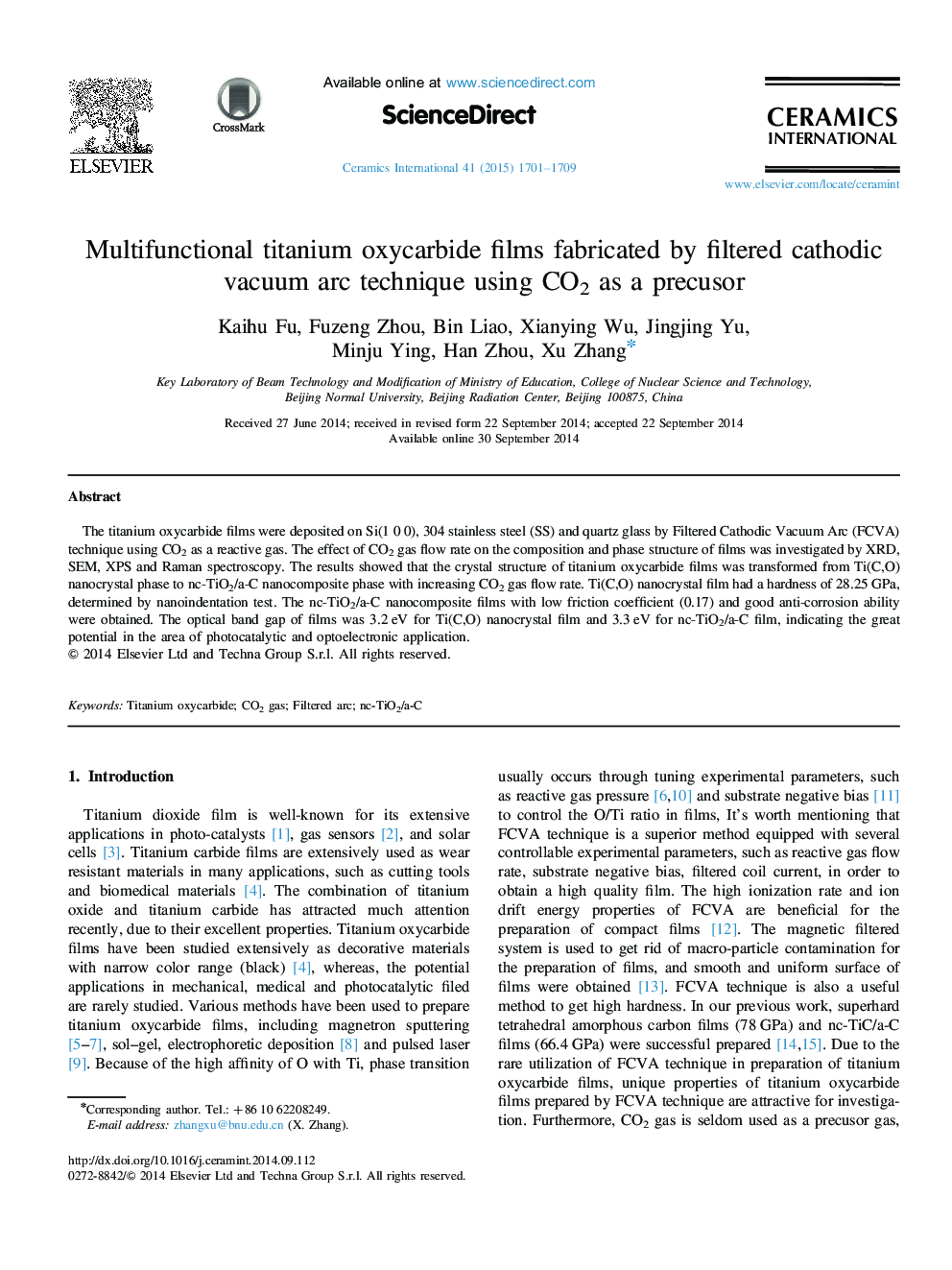| Article ID | Journal | Published Year | Pages | File Type |
|---|---|---|---|---|
| 1460877 | Ceramics International | 2015 | 9 Pages |
The titanium oxycarbide films were deposited on Si(1 0 0), 304 stainless steel (SS) and quartz glass by Filtered Cathodic Vacuum Arc (FCVA) technique using CO2 as a reactive gas. The effect of CO2 gas flow rate on the composition and phase structure of films was investigated by XRD, SEM, XPS and Raman spectroscopy. The results showed that the crystal structure of titanium oxycarbide films was transformed from Ti(C,O) nanocrystal phase to nc-TiO2/a-C nanocomposite phase with increasing CO2 gas flow rate. Ti(C,O) nanocrystal film had a hardness of 28.25 GPa, determined by nanoindentation test. The nc-TiO2/a-C nanocomposite films with low friction coefficient (0.17) and good anti-corrosion ability were obtained. The optical band gap of films was 3.2 eV for Ti(C,O) nanocrystal film and 3.3 eV for nc-TiO2/a-C film, indicating the great potential in the area of photocatalytic and optoelectronic application.
